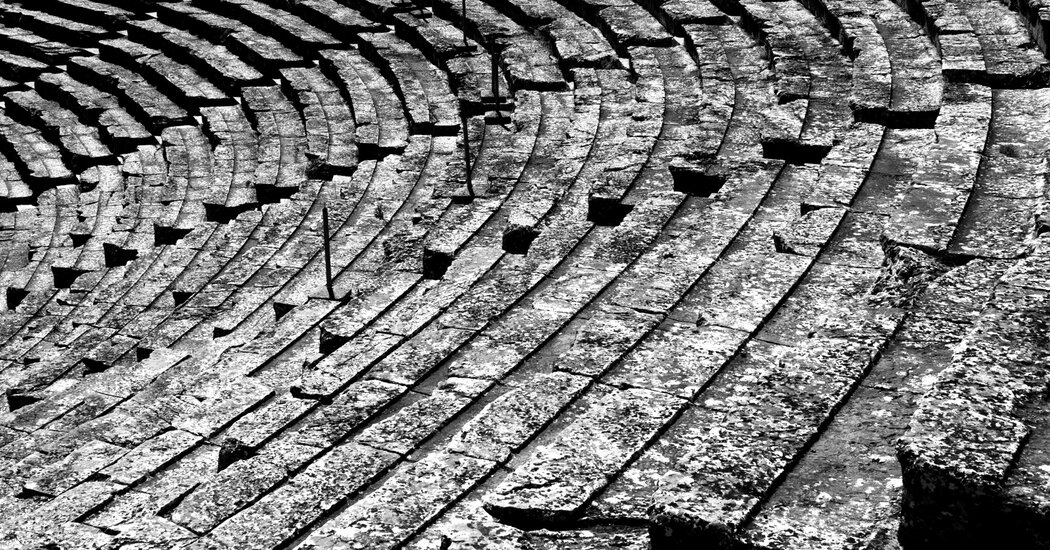Heat in Greece in summer was expected, but its intensity startled me. Wherever I went — Athens, Aegina, Delphi, the Peloponnese — the grass was parched, brittle and hay-colored, and seemed ready to catch fire. The air was hot and dry. At the sanctuary, evening brought relief. We were seated under the open sky on concentric stone benches in the acoustically ideal theater. The sun had just gone down as “Agamemnon” began. The performance was by a Munich-based ensemble, the Residenztheater, under the direction of Ulrich Rasche. This “Agamemnon” was in modern German, delivered in a declamatory, shouting style, and I can’t have been the only person present who had initial doubts. There were surtitles in English and Greek, and a musical score, heavy on percussion, somewhere between techno, heavy metal and classical minimalism, which was performed by four musicians who never left the stage. The stage itself was a circle, rotating on a hidden mechanism. If a given actor wanted to remain in our view, she or he had to walk against the rotation. The stage sometimes changed speed or direction, but it never stopped. The effect of these constraints — the shouted speech, the propulsive music, the perpetual motion — was visceral and hypnotic. The actors yelled their lines out, angry, pleading, arrogant, frantic, in a rhythm that was locked with or syncopated against the movements of their stalking legs. My doubts evaporated.
When Cassandra, who had already endured war, bereavement, captivity and sexual violation, screamed out her prophecy of the imminent murder of Agamemnon and herself, a prophecy doomed to be disbelieved as all her prophecies were, I looked away from the stage. It was almost as though, if I didn’t see the action, the inevitable would not unfold. So, briefly, I turned my eyes to the sky, to the glittering constellations that were now visible above Argolis.
Everyone has their reasons. Near the end of the play, Clytemnestra hauls into view a black sheet with the bloodied bodies of Agamemnon and Cassandra. She is naked, grotesque and dazzling under the stage lights. She exults in her revenge on Agamemnon for his sacrifice of their daughter Iphigenia before the war. Then her lover and co-conspirator, Aegisthus, appears, also naked. He recounts the grudge he held on behalf of his father, Thyestes, whom Agamemnon’s father, Atreus, had tricked into eating his own children. But Clytemnestra and Aegisthus had also murdered Agamemnon for reasons of lust and power. These are not nice people. In Ted Hughes’s powerful translation of the play, the chorus says:
Where is right and wrong
In this nightmare?
Each becomes the ghost of the other.
Each is driven mad
By the ghost of the other.
Who can reason it out?
